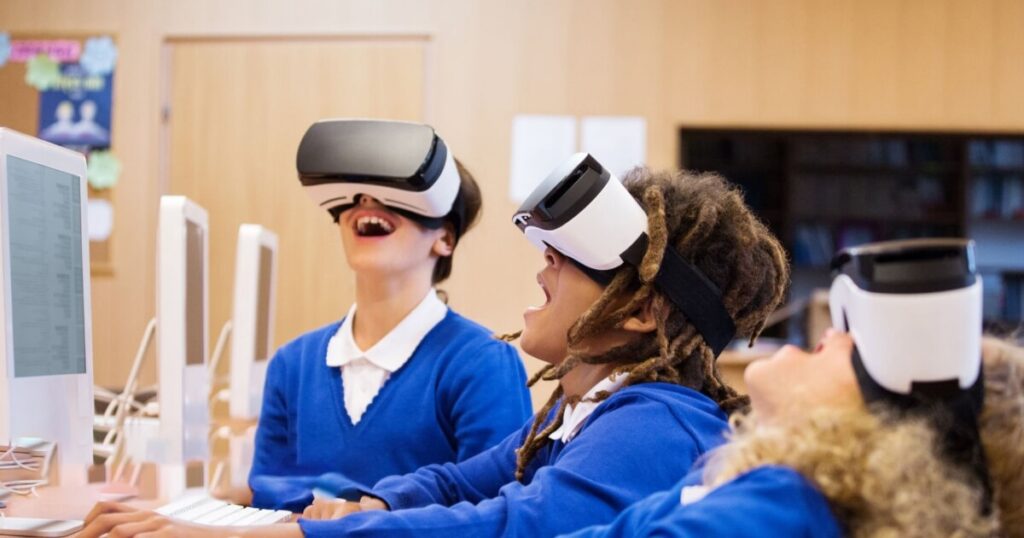Gamification in educational settings

Gamification in educational settings has emerged as a powerful tool to engage and motivate students, facilitating deeper learning and comprehension. This innovative approach introduces game-like elements into the learning process, transforming traditional education into a more interactive and enjoyable experience.
This blog post explores the impact of introducing gamification strategies into educational environments, outlining its benefits, challenges, and strategies for successful implementation. Dive in to understand how gamification can revolutionize learning.
Gamification: A New Frontier in Education
The integration of gamification within educational frameworks represents a shift away from conventional teaching methods, focusing instead on leveraging the motivational power of games. Gamification incorporates elements such as points, badges, and leaderboards to create a competitive, fun learning environment.
By transforming learning into an engaging game, educators can captivate students' attention, encouraging them to participate more actively in their education. The beauty of gamification lies in its versatility—applicable across various subjects and education levels, it can be tailored to suit diverse learning needs.
Research shows that gamification not only enhances student engagement but also boosts retention rates and facilitates the development of problem-solving skills and critical thinking.
However, the effective application of gamification requires careful planning and design to ensure it complements educational goals rather than distracts from them.
Key Benefits of Gamification in Education
One of the primary advantages of gamifying education is the significant increase in student engagement and motivation. By integrating rewards and competitive elements, students are more inclined to participate and invest effort in their learning journeys.
Additionally, gamification encourages a growth mindset, teaching students that failure is part of the learning process. This aspect fosters resilience and persistence, essential skills in both academic and personal development.
It also offers personalized learning experiences. Gamified systems can adapt to individual learner's needs, pacing, and preferences, making education more inclusive and effective.
Challenges and Solutions
Despite its benefits, implementing gamification comes with its own set of challenges. One concern is ensuring that the game-like elements do not overshadow the educational content, leading to diminished learning outcomes.
To overcome this, educators must strike a balance between fun and educational value, ensuring gamified activities align with learning objectives. It's also crucial to incorporate feedback mechanisms, like quizzes or reflections, to assess understanding and reinforce learning.
Another hurdle is the potential for increased competition to create stress or a sense of discouragement among students. To counteract this, it's important to emphasize collaborative challenges and recognize effort, not just achievement.
Additionally, the development of comprehensive gamified systems requires significant time and resources. Smaller-scale, low-cost strategies, such as using existing digital platforms or simple points systems, can be effective initial steps.
Innovative Examples of Gamification
Several success stories highlight the transformative power of gamification in education. Platforms like Duolingo use game mechanics to teach languages, making learning accessible and enjoyable for users worldwide.
In classroom settings, teachers have introduced gamified elements through platforms like Kahoot! for quizzes, transforming assessments into exciting competitions.
Moreover, some schools have developed their own gamified systems, incorporating narrative elements, missions, and rewards that align with curricular goals, thereby enhancing the educational experience.
The key to successful gamification lies in creativity and a learner-centered approach, ensuring that educational objectives remain at the core of gamified activities.
Best Practices for Implementing Gamification
For educators looking to introduce gamification, start small. Incorporate basic elements like points or badges for completed tasks or achievements. This can gradually evolve into a more sophisticated system.
Understanding your students' interests and motivations is crucial. Gamification should be designed with the end-user in mind, ensuring relevance and appeal.
It's also important to foster a supportive environment that values collaboration over competition. Encouraging teamwork in gamified tasks can enhance social learning and mitigate the stress of competition.
Finally, continuous evaluation and adaptation of gamified systems are essential to ensure they meet educational objectives and remain engaging for students.
Future Directions
The potential for gamification in educational settings is vast and largely untapped. With advancements in technology, particularly in augmented and virtual reality, there are exciting opportunities to create immersive learning experiences that could redefine traditional education.
Furthermore, as educators and researchers gain a deeper understanding of gamification's impact, more sophisticated strategies and tools are likely to emerge, enhancing learning outcomes across the globe.
Conclusion
Gamification in educational settings opens up a world of possibilities for engaging students in their learning journeys. While challenges exist, the potential benefits of enhanced engagement, motivation, and personalized learning experiences make it a compelling strategy for educators.
By thoughtfully integrating gamification elements into the learning process and continuously refining these strategies based on feedback, educators can create dynamic and effective educational environments that cater to the diverse needs of modern learners.

Related